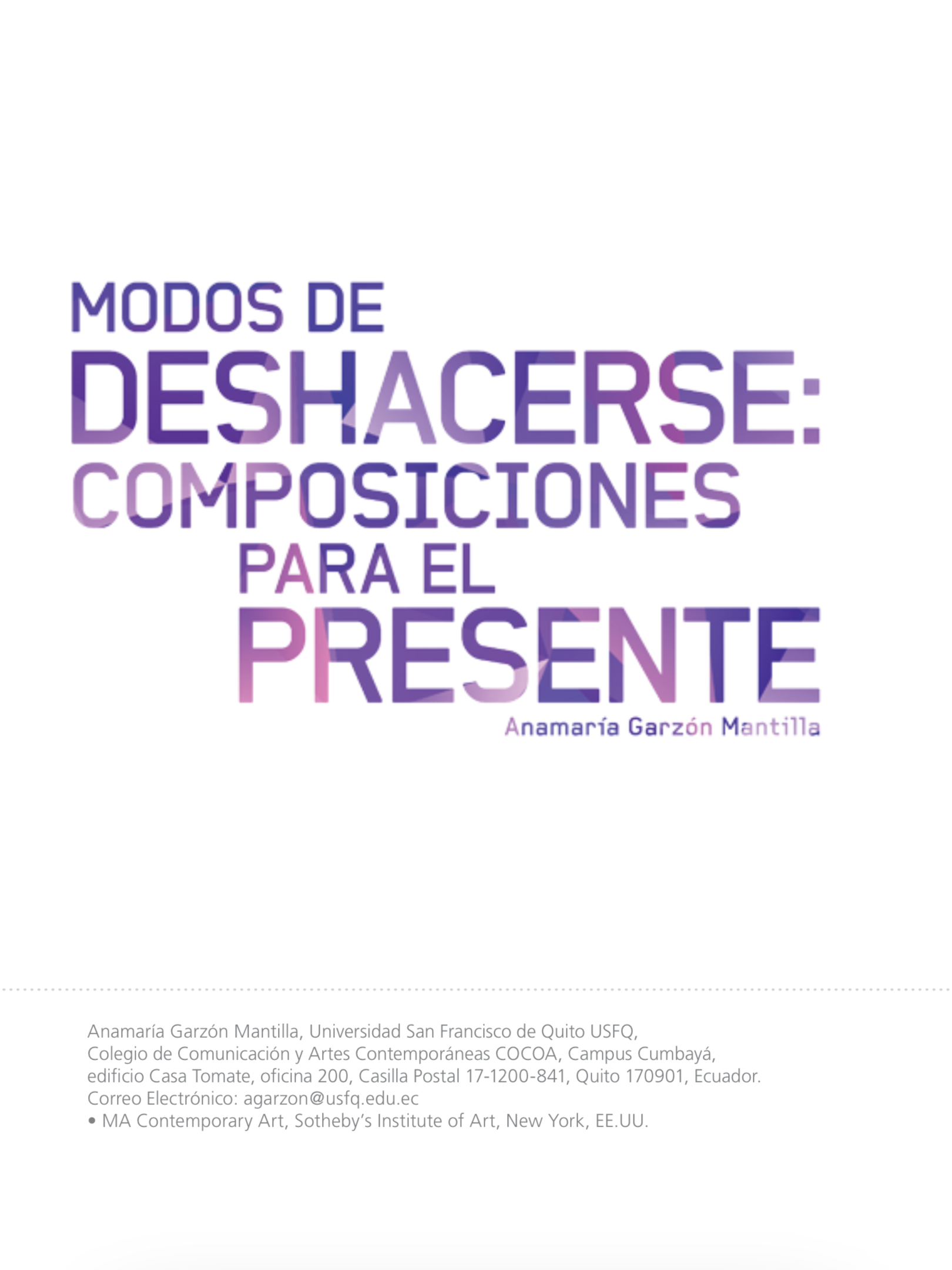
Publicado 2017-11-01
Palabras clave
- Academia,
- teoría,
- composicionista,
- introducción
Cómo citar
Derechos de autor 2017 Anamaría Garzón Mantilla

Esta obra está bajo una licencia internacional Creative Commons Atribución-NoComercial 4.0.
Resumen
En post(s) 3, ningún texto es necesariamente lo que parece, pues post(s) no es una revista de música, tampoco una de literatura ni de danza, ni de métodos etnográficos ni de arte. Pero los temas que presentamos pasan por esas y otras áreas, encontrando resquicios para generar reflexiones interdisciplinares, radicalmente actuales. Son textos que saben ver más allá de los marcos disciplinares, que exploran de tal modo que no dan pasos en mundos ya constituidos, sino que buscan componer nuevas relaciones, construir sentidos donde las disciplinas se entrelazan y articulan otras posibilidades de lectura. Este texto presenta una breve introducción a esta edición.
In the third edition of post(s), none of the texts is necessarily what it seems, as post(s) is neither a magazine specialized in music, dance, literature ethnographic methods nor art. But the themes that we present in this edition touch on those and other areas, finding loopholes to generate radically current interdisciplinary reflections. These are texts that look beyond disciplinary frames, that explore without taking steps in worlds already constituted; rather they aim to compose new relationships and build senses where disciplines can intertwine and articulate other interpretative possibilities. The following text provides a brief introduction to this edition.
Descargas
Citas
- Latour, B. (2010). An Attempt at a «Compositionist Manifesto». New Literary History, 41(3), 471-490. Retrieved from http://www.jstor.org/sta- ble/40983881
- Rogoff, I. ([2004] 2008), "˜What is a Theorist?"™, in J. Elkins and M. Newman, The State of Art Criticism, New York and London: Routledge, pp. 97-109.
